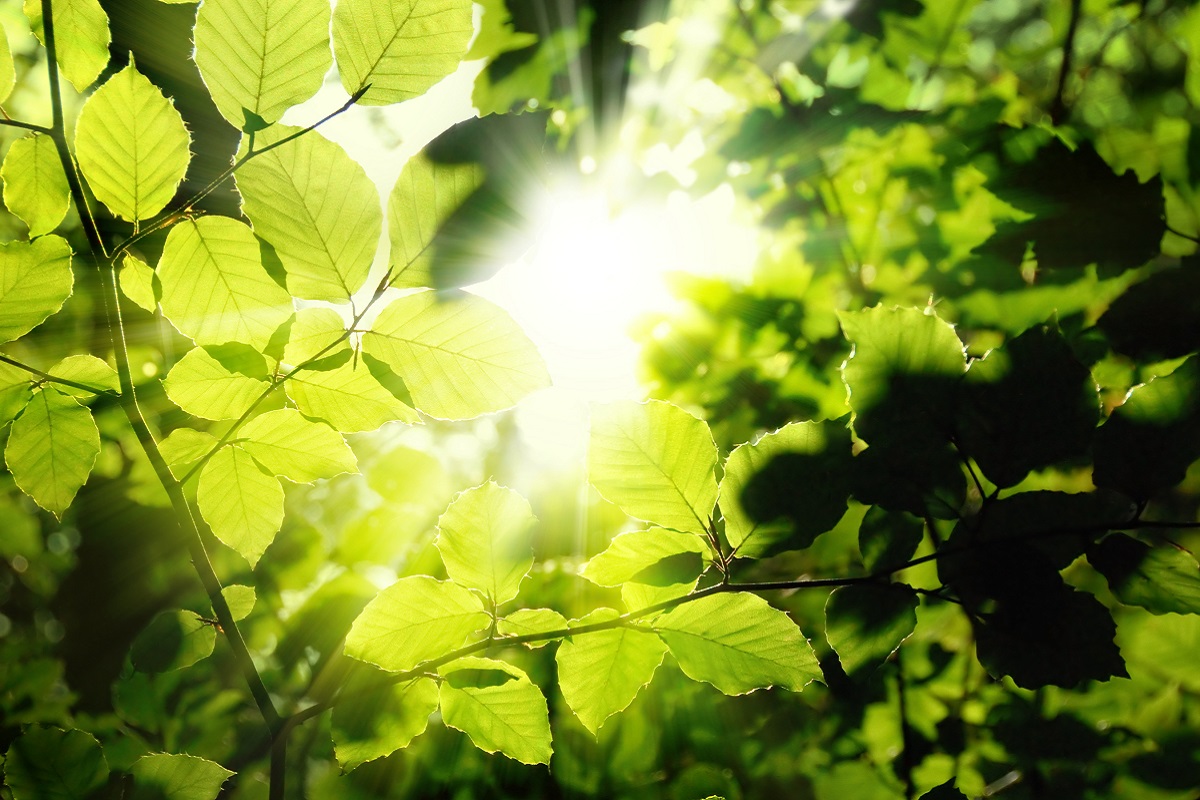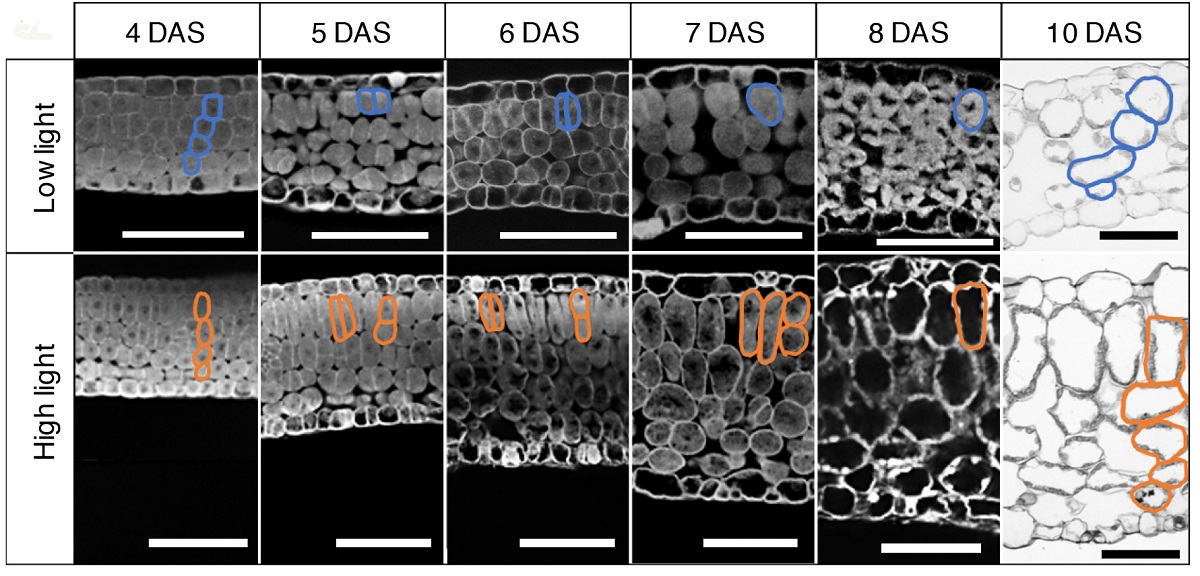How plants make the most of the sun Leaves become thicker under more intense light


Cross-sectional images of Arabidopsis leaves grown under low (top image) and high light intensity (bottom image). From a young age, the size of leaf cells and division to make two cell layers are obvious in the high-intensity light condition. DAS = Days After Sowing (refers to age of leaves). Example cells are outlined in blue or orange colors. Image by Hoshino, Yoshida and Tsukaya. Originally published by The Plant Journal DOI: 10.1111/tpj.14467
Resting in the shade of a tree during a summer heat wave is one way to cool off, but the leaves of that tree get no relief. Researchers from the University of Tokyo have uncovered how some leaves adapt to intense sun exposure.
"For human beings, the high intensity of sun light is sometimes harmful and difficult to deal with. But plants must absorb light to live, even in a harsh light condition," said Professor Hirokazu Tsukaya, director of UTokyo’s Koishikawa Botanical Garden and an author of the recent research publication.

Arabidopsis plants, also called thale cress, growing under under low (top image) and high light intensity (bottom image). Leaves adapt to higher intensity light by developing taller cells and extra layers of cells, becoming thicker overall than leaves grown with less intense light exposure. Image by Hoshino, Yoshida and Tsukaya. Originally published by The Plant Journal DOI: 10.1111/tpj.14467
Leaves on lower branches are shaded by leaves higher up on the plant, so researchers were interested in when and how leaves begin to adapt to different light intensities.
Leaf adaptations on different parts of a plant are fundamental observations for botanists, but previous research had been inconclusive about when the differences arise. Does a plant predetermine a leaf's structure before it begins to grow, or does the leaf change as it grows in response to the conditions it encounters?
For its investigation, the UTokyo research team grew seedlings in incubators with either high or low levels of light. The high-intensity light condition — expressed as 280 micromoles (μmol) per square meter (m−2) per second (s−1), using a standard unit for measuring light intensity — was similar to being under the sun in an open field on a day with thin clouds. The low-intensity light condition (70 μmol m−2 s−1) was similar to being inside near a sunny window. Researchers used a type of thale cress, called Arabidopsis, which often grows as a weed along roadsides and is commonly used in laboratories.
Researchers examined the plants' leaves starting four days after they planted the seeds, when the leaves were less than 1 millimeter (0.04 inch) in length, until the plants were a maximum of 21 days old.
To examine such small leaves, researchers had to design a new technique to preserve, make transparent and observe the inner structure of the leaves.
"We think the difficulty of working with such small-sized leaves is why we were the first ones to do this research," said Tsukaya.
Starting at six days old, leaves under high-intensity light developed differently than leaves under low-intensity light. Differences in the number and size of cells became more noticeable until the plants were eight days old, when the leaves stabilized.
"We examined the time course of leaf-thickening growth in detail, and our data revealed that the leaf thickness is not predetermined before a leaf begins to grow," said Tsukaya.
The cells on the top, sun-exposed side of leaves under high-intensity light developed two layers of stretched-out, tall cells. Eventually, the cells also swelled up. Those leaves were thicker overall than leaves under low-intensity light.
Additional experiments using different colors of light and genetically manipulated plants revealed that the cells get taller in response to the blue colored wavelengths of light and swell in response to additional sugar in the form of sucrose.
Researchers also studied the amount of DNA in the cells. It is common for plants to carry duplicate copies of their entire genome in their cells, a condition called polyploidy. Leaves under high-intensity light became polyploid starting when the plants were 10 days old, eventually carrying up to 32 copies of their genomes in a small population of cells. Leaves under low-intensity light carried fewer extra copies of their genomes.
Researchers are unsure what purpose the extra copies of the genome serves.
"Here we could reveal how plants change their leaf thickness, and it is a good turning point for future studies on plant adaptation. Adaptation of plant leaves to the environment is a key issue to understand natural variation and biodiversity of plants on the Earth," said Tsukaya.
The research team hopes their results may eventually lead to technical advances to improve food crops and forest conservation.
Papers
Rina Hoshino, Yuki Yoshida, and Hirokazu Tsukaya, "Multiple steps of leaf thickening during sun-leaf formation in Arabidopsis," The Plant Journal: July 26, 2019, doi:10.1111/tpj.14467.
Link (Publication )
)
Related links
- Lab of Eco-Devo Plant Biology

- Tsukuya research video (Japanese)

- Koishikawa Botanical Garden

- Graduate School of Science






